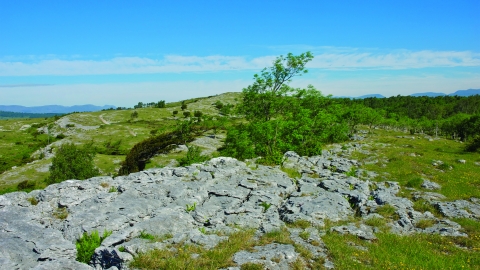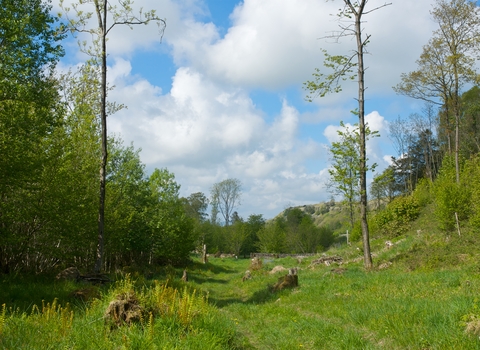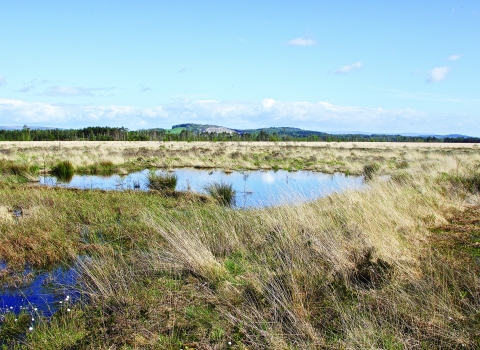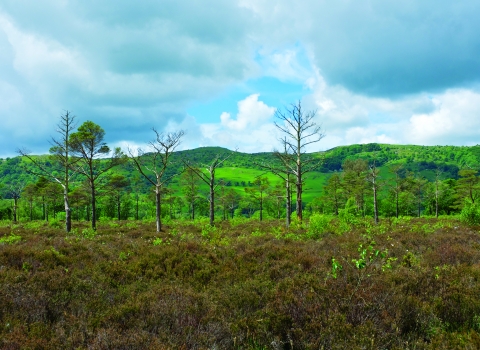
View of the cairn on Whitbarrow - Hervey Memorial reserve against the backdrop of The Lake District fells.

Limestone pavement at Whitbarrow Hervey Memorial Reserve © John Morrison

Whitbarrow - Hervey Memorial Reserve
Location
OS Map Reference
OS 1:50,000. Sheet No. 97Witherslack Hall parking area:
Grid reference: SD 437 859
Witherslack Hall entrance:
Grid reference: SD 440 865
what3words ///became.snapper.nanny
Getting here
By car:
From the A590 take the road signposted for Witherslack. Follow this through the village and then for a further 2km/1.2 miles. At Witherslack Hall (now Oversands School) turn right and onto the rough track for parking. Follow the footpath across a field and up the scar to the reserve.
A more gentle approach is possible from The Howe or Row off the A5074, however, parking here is limited.
By bicycle:
Whitbarrow nature reserve is 3.3km/2 miles from National Route 70 Walney to Wear (W2W).
By public transport:
Buses run from Barrow in Furness, Ulverston and Kendal to Witherslack.
View on What3Words
Know before you go
Dogs
When to visit
Opening times
Open all year roundBest time to visit
April to AugustAbout the reserve
Wildlife highlights
- In spring - limestone flowers such as early purple orchids, hoary rock rose, primrose and blue moorgrass.
- In summer - rich flora attracts four species of fritillary butterfly: high brown, pearl-bordered, small pearl-bordered and dark green.
- Striking spikes of dark-red helleborine orchid are found around limestone pavement.
- Later in summer, dropwort, birdsfoot trefoil, lesser meadow rue, limestone bedstraw and thyme are flowering.
- Skylark and wheat ear.
- In autumn - find heather in flower, roe deer and wax cap fungi. Winter flocks of fieldfare and redwing feeding.
- All year - fantastic views, limestone pavement and rarebreed cattle and sheep grazing.
Limestone haven
The Carboniferous limestone of Whitbarrow was laid down 350 million years ago. Across the nature reserve, which occupies 100 hectares on top of the scar and includes the summit cairn, the rock is exposed as a series of limestone pavements, low crags and scree.
What makes Whitbarrow so special?
Far from being a rocky desert, the unique environment supports scores of plants and animals. Very thin soils over much of the site provide ideal growing conditions for a variety of plant species such as hoary rock-rose, primrose, cowslip and early-purple orchid, followed by bird’s-foot-trefoil, lesser meadow-rue, dropwort, limestone bedstraw and wild thyme later in the summer.
Blue moor-grass may seem common here but it’s extremely rare in UK. Unusual plants including rigid buckler-fern and hard shield-fern thrive in the sheltered micro-climate of the grikes.
Shelter in the limestone pavement
The limestone pavements provide sheltered places for a range of unusual plants to thrive.
You might find hart's-tongue fern, rigid buckler-fern, hard shield-fern or limestone polypody which are all abundant here. Between the limestone pavements, thicker soils allow heather and bracken to grow.
Scattered ash, birch and juniper add to the habitat mosaic of this fascinating place.
Great for butterflies
Whitbarrow nature reserve has a rich invertebrate fauna. In summer you may see four species of fritillary butterfly: high brown, dark green, pearl-bordered and small pearl-bordered, which all breed here.
Look out also for northern brown argus, grayling, common blue and small heath butterflies.
Other animals
Breeding birds include meadow pipit, both green and great spotted woodpecker and redstart.
Roe, and occasionally red deer, are seen at Whitbarrow nature reserve.
Keeping it special
Light year-round grazing with sheep and cattle has been re-introduced to maintain a mosaic of habitats.
Recent history
A small part of the nature reserve is owned by the Trust and the remainder is held on a long lease from the Argles family. The nature reserve was established in memory of Canon A K Hervey, a founder member of Cumbria Wildlife Trust
The enclosure, also known as Flodder Allotment, was created in the 19th century as a result of the Enclosure Acts.
Species
- Grayling
- Small heath
- Pearl-bordered fritillary
- Small pearl-bordered fritillary
- Green woodpecker
- Great spotted woodpecker
- Redwing
- Fieldfare
- Common bird's-foot-trefoil
- Meadow pipit
- Wild thyme
- Primrose
- Cowslip
- Pink waxcap
- Early purple orchid
- Hart's-tongue fern
- Redstart
- Skylark
- Wheatear
- Roe deer
- Red deer
- Ash
- Silver birch
- Common juniper
- Common blue
Habitat
Contact us
Environmental designation
Upcoming events at Whitbarrow - Hervey Memorial Reserve
If there are any upcoming events at Whitbarrow - Hervey Memorial Reserve we'll show them to you below.
Did you know?
The name Whitbarrow means white hill.






